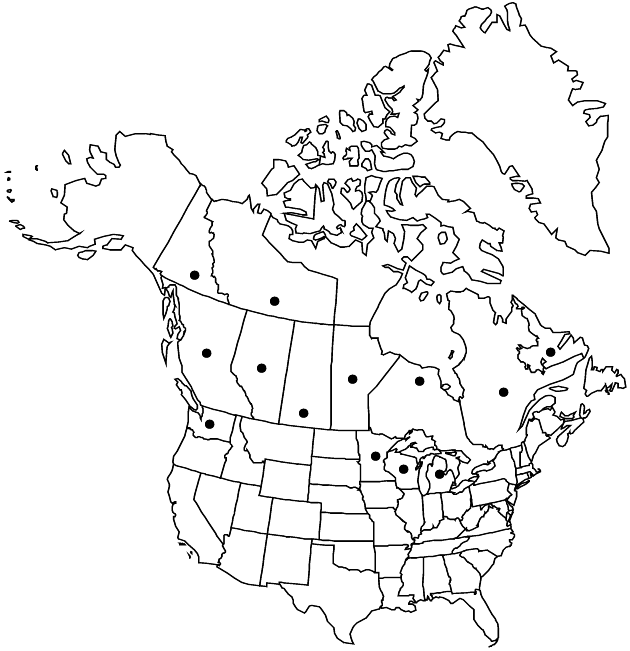Petasites frigidus var. ×vitifolius
Canad. J. Bot. 76: 2072. 1999.
Basal leaves: blades palmately to palmati-pinnately nerved, deltate or broadly cordate to reniform, 2–43 × 3.5–47 cm (bases sometimes convex-curved), irregularly palmately to palmati-pinnately lobed (primary lobes 4–14, triangular, sinuses usually less than halfway to bases, lobes subentire to sinuate-dentate, secondary lobes 0–11, entire or dentate, teeth to 44 per side), abaxial and adaxial faces glabrous or woolly to tomentose, sometimes glabrescent. Staminate heads 3–32; ray-florets 2–27, corolla laminae 2.1–7.8 mm; disc-floret style-branches 0.4–1.4 mm, papillate or hairy. Pistillate heads 9–34; ray-florets 48–89, corolla laminae 0.8–2.5 mm; disc-florets: corolla lobes 0.8–2 mm, style-branches 0.3–1.2 mm, papillate or hairy. Pappi (pistillate) to 15 mm. 2n = 60.
Phenology: Flowering early spring.
Habitat: Wet marshy sites, moist woodlands
Elevation: 100–1700 m
Distribution

Alta., B.C., Man., Nfld. and Labr. (Labr.), N.W.T., Ont., Que., Sask., Yukon, Mich., Minn., Wash., Wis.
Discussion
Petasites frigidus var. ×vitifolius often grows in association with one or both putative parents (P. frigidus var. palmatus and P. frigidus var. sagittatus).